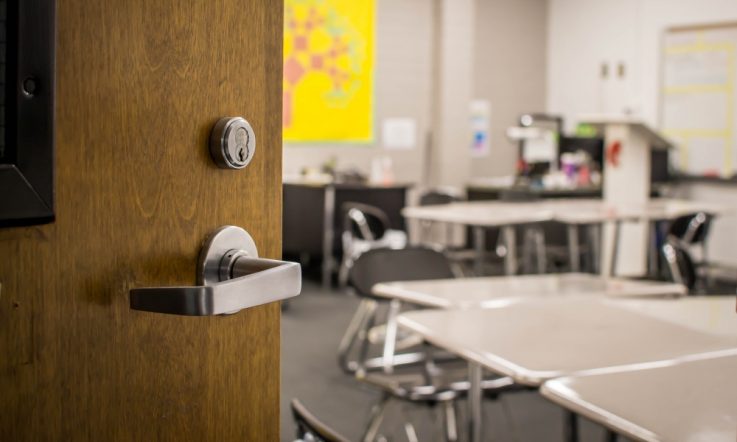In our last Teacher survey, many of you told us you’d like more content on trauma-informed practice. In this article, Dr Emily Berger, educational and developmental psychologist at Monash University, shares trauma-informed strategies that teachers can use in the classroom to support both student and teacher wellbeing.
Children exposed to trauma face additional learning and social-emotional problems at school, contributing to teachers’ emotional burden and stress. Teachers are often unsure how to manage the needs of these students, whilst also managing their own stress and emotional labour. Limiting emotional distress for teachers exposed to traumatised students is essential to ensure a resilient teaching workforce.
Trauma is a common experience in childhood – 60 to 80% of children will be exposed to a potentially traumatic event by 18 years of age (Copeland et al., 2007; Finkelhor et al., 2009). Types of potentially traumatic events in childhood include exposure to abuse, neglect or maltreatment, domestic violence, living with a parent with mental illness, exposure to disasters, medical procedures and accidents.
These events can severely impact a child’s wellbeing, development and learning (Perfect et al., 2016). Children most at risk of negative outcomes from potentially traumatic events are those who have experienced repeated and prolonged trauma, children with prior mental health challenges, and those who lack support systems at home and school (Berger et al., 2022).
With the high proportion of school-aged children having experienced a form of trauma, many teachers will find themselves interacting closely with students who have been traumatised, placing teachers at risk of psychological distress in the school setting. The reactions of teachers can also potentially re-traumatise traumatised students in the school environment.
For example, a child exposed to family violence may experience a trauma reaction if a teacher raises their voice in the classroom or if they are prevented from leaving a certain situation at school. These types of experiences are known to re-traumatise a child. This is because they can remind the child of past traumas, such as violence and anger from adults at home.
Thus, it is important that children exposed to trauma experience supportive and nurturing environments to help them recover and potentially thrive after a traumatic experience.
Trauma-informed classroom strategies
Trauma-informed practice is a recognised evidence-based approach designed to help teachers manage the needs of and support children exposed to trauma. Trauma-informed practice also helps teachers manage the risk of experiencing vicarious trauma. It provides professional development to teachers on the prevalence and impacts of early life trauma in childhood, and methods that teachers can adopt in their classroom to prevent children from experiencing re-traumatisation at school (Berger & Martin, 2021).
Trauma-informed classroom programs include three levels of support: 1) promoting positive teacher-student relationships and routines; 2) teaching students emotional and behavioural regulation skills; and 3) encouraging students to set goals and maintain coping strategies (Berger et al., submitted). This can include things like establishing routines and predictable classroom schedules, getting to know students and their interests, avoiding punitive responses to students’ disruptive behaviours, and working with students to understand their learning goals and needs.
Research has found that trauma-informed practice prevents many negative consequences for children exposed to trauma, such as lowering symptoms of depression, anxiety and posttraumatic stress, improving students’ school engagement and learning, and improving teachers’ knowledge and confidence to implement trauma-informed strategies in their classroom (Berger, 2019).
Evidence-based trauma-informed programs also involve school principals who implement trauma-informed school polices, and school psychologists and counsellors who provide additional support to trauma-affected students and families (Berger, 2019). Research shows that engaging school leaders and mental health staff when implementing trauma-informed programs helps to prevent negative mental health outcomes for teachers when exposed to traumatised students in their classrooms (Dorado et al., 2016).
Trauma-informed programs which involve teachers, school leaders and mental health staff are often referred to as ‘whole-school trauma-informed programs’ which focus on sharing the load amongst staff of supporting traumatised students to prevent staff burnout and vicarious trauma.
Teachers and vicarious trauma
Secondary trauma (also known as vicarious trauma) is a concept that was first coined approximately 30 years ago when it was observed that service providers expressed symptoms of posttraumatic stress from exposure to details about other people’s trauma, without having experienced the traumatic event themselves. This can be through hearing about the details of other people’s trauma or responding to the mental health needs and distress of traumatised people over time.
Since then, secondary trauma has been observed among military and law enforcement personnel, doctors, psychologists and social workers, and, more recently, teachers (Berger et al., 2021; Hensel et al., 2015). Teachers are at risk of secondary trauma when exposed to details, especially repeated details, about a student’s traumatic experiences.
Trauma-informed practice has been found to reduce symptoms of secondary trauma among teachers. For example, a program designed to respond to secondary trauma symptoms among teachers was found to reduce symptoms of posttraumatic stress and secondary trauma of educators exposed to the 2010 Canterbury earthquake in New Zealand (Berger et al., 2016). The ERASE Stress program includes professional development, skills training and resiliency strategies for educators, enabling them to support themselves and their students in response to critical incidents and events (Gelkopf & Berger, 2009).
Unfortunately, these programs are some of the few examples that have been developed and found to be effective at reducing the onset and symptoms of secondary trauma among teachers.
Strategies for resilience
Vicarious resilience (or vicarious posttraumatic resilience) is a term used in the trauma literature to describe people who do not experience distress as a result of their work with traumatised people. The resilience literature is clear that people show vicarious resilience when they have a number of strengths and coping mechanisms that help them to overcome the stress of knowing about a traumatic experience (Hernandez-Wolfe, 2018).
Resources and coping mechanisms include showing empathy and changing one’s perspective on life based on exposure to traumatised people, sharing hope and positive reflections with people exposed to trauma, practices that affirm and support coping strategies of traumatised people, and increasing self-awareness and self-care around one’s own coping when working with traumatised people (Hernandez-Wolfe, 2018).
Another review found that to maintain teachers’ wellbeing, programs need to promote teachers’ individual coping strategies as well as change systemic practices such as a school culture that values teacher wellbeing, leaders who prioritise teacher wellbeing, and school policies that promote teachers’ wellbeing (Berger et al., in press).
Ultimately, more programs and policies are required in schools that prioritise teacher wellbeing and centre trauma-informed programs in schools.
Programs and school policies with strategies to enhance the wellbeing of students exposed to trauma and their teachers, effective school leadership, and school and community mental health support can promote a better school climate, enhancing the resilience and recovery of traumatised students and limiting secondary trauma and attrition of teachers.
References
Berger, E. (2019). Multi-tiered approaches to trauma-informed care in schools: a systematic review. School Mental Health, 11(4), 650-664. https://doi.org/10.1007/s12310-019-09326-0
Berger, R., Abu-Raiya, H., & Benatov, J. (2016). Reducing primary and secondary traumatic stress symptoms among educators by training them to deliver a resiliency program (ERASE-Stress) following the Christchurch earthquake in New Zealand. The American journal of orthopsychiatry, 86(2), 236–251. https://doi.org/10.1037/ort0000153
Berger, E., Bearsley, A., & Lever, M. (2021). Qualitative evaluation of teacher trauma knowledge and response in schools. Journal of Aggression, Maltreatment & Trauma, 30(8), 1041-1057. https://doi.org/10.1080/10926771.2020.1806976
Berger, E., & Martin, K. (2021). Embedding trauma-informed practice within the education sector. Journal of Community and Applied Social Psychology, 31(2), 223-227. https://doi.org/10.1002/casp.2494
Berger, E., Martin, K., Krishnamoorthy, G., Barrett, E., Brunzell, T., Ayre, K., Rees, B., & Wheeler, K. (2022). Trauma-Informed Practice in Schools during COVID-19: Reflections on Programs in Australia. [Manuscript submitted for publication].
Berger, E., Reupert, A., Campbell, T. C. H., Morris, Z., Hammer, M., Diamond, Z., Hine, R., Patrick, P., & Fathers, C. (in press). A systematic review of evidence-based wellbeing initiatives for schoolteachers and early childhood educators. Educational Psychology Review. [https://doi.org/10.1007/s10648-022-09690-5
Copeland, W. E., Keeler, G., Angold, A., & Costello, E. J. (2007). Traumatic events and posttraumatic stress in childhood. Archives of general psychiatry, 64(5), 577–584. https://doi.org/10.1001/archpsyc.64.5.577
Dorado, J. S., Martinez, M., McArthur, L. E., & Leibovitz, T. (2016). Healthy Environments and Response to Trauma in Schools (HEARTS): A whole-school, multi-level, prevention and intervention program for creating trauma-informed, safe and supportive schools. School Mental Health: A Multidisciplinary Research and Practice Journal, 8(1), 163–176. https://doi.org/10.1007/s12310-016-9177-0
Finkelhor, D., Ormrod, R. K., & Turner, H. A. (2009). Lifetime assessment of poly-victimization in a national sample of children and youth. Child abuse & neglect, 33(7), 403–411. https://doi.org/10.1016/j.chiabu.2008.09.012
Gelkopf, M., & Berger, R. (2009). A school-based, teacher-mediated prevention program (ERASE-Stress) for reducing terror-related traumatic reactions in Israeli youth: a quasi-randomized controlled trial. Journal of child psychology and psychiatry, and allied disciplines, 50(8), 962–971. https://doi.org/10.1111/j.1469-7610.2008.02021.x
Hensel, J.M., Ruiz, C., Finney, C. and Dewa, C.S. (2015), Meta-Analysis of Risk Factors for Secondary Traumatic Stress in Therapeutic Work With Trauma Victims. Journal of Traumatic Stress, 28, 83-91. https://doi.org/10.1002/jts.21998
Hernandez-Wolfe, Pilar. (2018). Vicarious Resilience: A Comprehensive Review. Revista de Estudios Sociales. 66. 9-17. 10.7440/res66.2018.02.
Perfect, M.M., Turley, M.R., Carlson, J.S. et al. School-Related Outcomes of Traumatic Event Exposure and Traumatic Stress Symptoms in Students: A Systematic Review of Research from 1990 to 2015. School Mental Health 8, 7–43 (2016). https://doi.org/10.1007/s12310-016-9175-2
Reflecting on your own school context, is there an awareness of how student trauma can affect teachers’ wellbeing? Are teachers aware of how they can implement trauma-informed classroom strategies? As a school leader, are supports in place for teachers who may be experiencing vicarious trauma?



